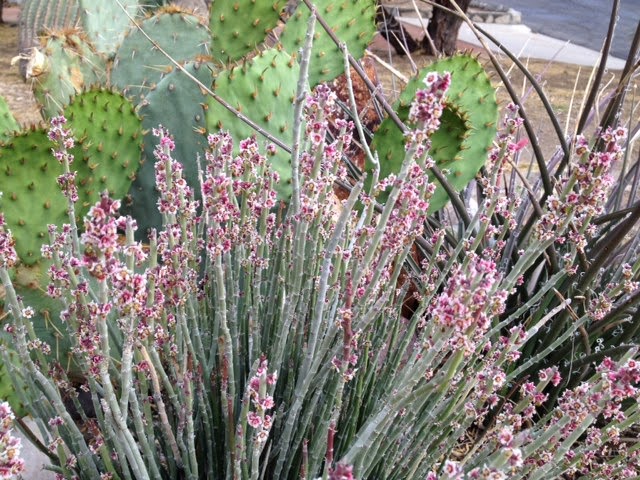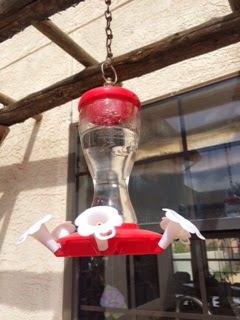I must explain something up front. El Paso, Texas, my home town, receives on an average only 9.7 inches of precipitation a year. This meteorological fact means that for El Pasoans, rain chances are a cause for great rejoicing. Weathercasters on the nightly news proudly announce a 10% chance of rain. We imagine a downpour. Rain clouds build in the sky. We are sure that today will be the day for a soothing rain shower. A hint of moisture can be detected in the morning air as we walk outside to collect the morning paper. Should the garden be watered today? Any hope, however slight, of precipitation is cause for optimism.
And when it does finally rain! In my household, we call out to other family member, "It's raining!", which means we all rush outside and yes, often stand in the rain. Sometimes this weather event calls for sitting on the front porch swing to watch the rain coming down. Other times it suggests a ride around town, just to be out in the moisture-laden air. Friends text or call each other to see if it is raining in their neighborhood or to brag about how much rain their own area is receiving.
"The plants will love it," someone always observes about rainfall. In our hot desert climate, we grow quite a few native plants that depend on rain for survival. Even the prissy little annual plants in the garden appreciate a drink of the nitrogen-filled rain water. Several days ago, during a brief rain event, my husband Wayne rushed outside to take pictures. Here are some of his photos that may give you an idea of what it means to an El Pasoan to have rain. In this picture, rain clouds are building in the Northeast.
This was the view from the front of the house as the rain started. You can see yuccas, ocotillos, smaller cacti, and a mesquite tree in the neighbor's yard, all soaking up moisture.
This was a view of the back yard, with grapevines and the garden gate getting a good washing.
Through the garden gate, small fruits on the dwarf nectarine tree were wet with rain.
And the small pears weren't missing out on the shower either.
It is especially helpful to desert plants when the rain falls. This is a candelilla plant. It is a native of the Chihuahuan Desert and is frequently found in Big Bend region of Texas. In order to preserve moisture, the candellila plant coats its stems with wax, which can be extracted for products like chewing gum and cosmetics. The flowers on the stems are tiny, but quite attractive . I was very glad the candelilla was receiving some natural water, although I do like it so much that I give it supplemental water as well.
This is a close up of the blossom on an ocotillo plant. A common name for the ocotillo is coachwhip, which I think describes the long, spiny stems very well. These plants have always been a mystery to me. I can never predict when they are going to produce tiny green leaves or brilliant red blossoms. I do think that rain encourages ocotillos to put on a show. A former neighbor of ours remarked once that ocotillos spend half of their lives looking dead. But I think it is worth waiting for when they spring into life. Hummingbirds love them!
So, I hope you can see that when thunder rolls and lightning flashes in the desert, the happiness quotient of El Pasoans rises. We know we are in for a treat, and I have to believe that the plants know that as well.


















